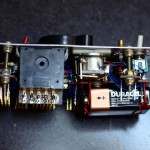
I was pondering my last reflection, this blog, and my, still imaginary, portfolio and found a recurring theme: they lack is a compelling story. I thought about the elements of a good story arc and words like struggle, challenge, and conflict and resolution came to mind.
But, what happens when things go according to plan? A worthy accomplishment, but a boring story.
Consider:
We started our trip in spite of the questionable weather forecast, but we were determined to arrive at our destination in time for my mother’s birthday celebration. The weather turned out to be worse that expected and going over the pass, our car slid into a ditch–reminding me that I should have replaced the worn tires sooner. Unable to get a cell phone signal, we shivered on the side of the road as we waited for a passing motorist to stop and help us out. Finally, a helpful soul gave us a ride to the next town where we were able to get a hot cup of coffee and hire a tow truck. As luck would have it, our good Samaritan was going to the same town as my mother’s party and gave us a lift. We arrived just in time to wish her a happy birthday and share in the cake.
Compared to:
We saw that the weather looked bad going over the pass, so we put the snow tires on the car before we left for my mother’s birthday party. The weather turned out to be worse than forecast going over the pass so traffic was slow. The cars in the ditch alongside the road and their attendant tow trucks didn’t help. But, slow and steady wins the race. We got to the party a bit later than we’d hoped, but with plenty of time to meet some long-lost relatives and to sing “Happy Birthday!”
I about fell asleep writing the 2nd version. Beyond a beginning, middle, and an end, it had none of the elements of a good story. No conflict. No drama. No tension.
Just predictable results.
As I reflected on the adapter box, I really couldn’t find much drama to add to the reflection. The most tense moment that occurred during the project was when I was afraid I might damage the case. As a result, I took precautions like measure carefully, tape over the box to protect the finish, and…
…wait for it…
I didn’t damage it. It all worked out fine.
Zzzzzzzzzz.
Which leaves me struggling between looking for stories like this flying story I posted in Quora, which have punctuated my life, and describing projects I’ve worked on–most of which are like the second story example above.
I suppose if I was a better writer, I could make the second version sound a little more compelling…
Maybe that’s the hidden opportunity in all this? Something to work on.


 Catching up on long-overdue blog posts, here’s a project I did a couple of years ago to adapt an aircraft headset to my
Catching up on long-overdue blog posts, here’s a project I did a couple of years ago to adapt an aircraft headset to my 







